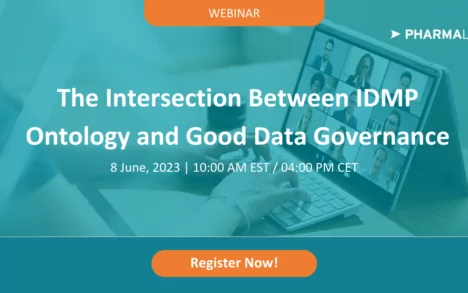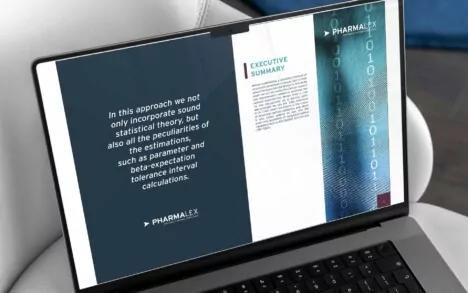Statistics and Data Science
From drug target discovery to launch and post launch activities, developing a new medical product generates vast amounts of data that need to be processed, analyzed and interpreted.
Whether for a drug, biologic or medical device, PharmaLex statisticians and data scientists have years of experience in the pharmaceutical industry turning your data into useful knowledge.
Contact our experts to find your solution
Proven expertise from discovery to post marketing
The Global Statistics and Data Science (GSDS) team at PharmaLex delivers analytical support for the development of medical products–from early research through pre-clinical to late phase studies, plus manufacturing and health economics.
We support our clients every step of the way–from discovery and non-clinical requirements to early strategic planning, clinical development, CMC development, regulatory submissions and post-approval/post-launch maintenance.
We offer global solutions covering the entire product lifecycle
Our solutions, consisting of core services, which are tailored to address each of your unique requirements. Extensive program management expertise is a key success factor within our service solutions.
The power of smart analytics
With recent advances in science and research methodologies, the sheer volume of information at hand has increased the importance of statistics and data science.
Applied correctly, statistics and data science can support the pharmaceutical industry:
- Identify or validate new drug targets by means of statistical genomics, bioinformatics and computational biology techniques
- Inform better decisions in clinical development (e.g. more efficient trial design, improved patient profiles)
- Apply prior knowledge of Bayesian statistics to reduce future costs and save time
- Realize the promise of precision medicine through biomarkers and diagnostics
- Lead to safer, more-robust manufacturing by using the quality-by-design concept
- Unlock data insights by using advanced methods like artificial intelligence and machine learning
- Progress the digitalization of the pharmaceutical industry
A multidisciplinary team of experts
Our team of (Bayesian) statisticians, data scientists, computational biologists, statistical geneticists, epidemiologists, bioengineers, pharmacists, and programmers offers an outstanding level of skill and expertise in pharmaceutical, life science, MedTech and Biotech industries.
Stretching across many diseases, our combined experience supports both target identification and the development of drugs, biologics and medical devices at every phase.
PharmaLex is recognized as a global leader in the application of Bayesian methodology, biomarker statistics and CMC statistics. Many of our scientists have wet-lab experience which helps them tackle challenges in biological data. We speak and operate in many languages, including SAS, R, STAN, JAGS and Python. Our deep regulatory experience also helps you navigate all statistical facets of study design and regulatory strategy.
Available Resources
FURTHER RESOURCES
Statistics and Data Science Services
Clinical Biostatistics
PharmaLex’s Global Statistics and Data Science team brings together a wide range of experts – from study design and planning to statistical analysis, reporting and data management. Our experts help companies with complex innovative trial design, translational and precision medicine, pharmacometrics, and data science across the clinical journey.
More InfoCMC Statistics
In CMC statistics, GSDS has been leading the field and acted as opinion leader for the last 15 years, proposing robust and innovative statistical solutions for the development, validation, and control of processes to manufacture all types of drugs. We help our customers applying the latest guidance on processes, formulation, and assay lifecycle (e.g. FDA process validation, ICH Q1-Q14), from early development and characterization, process performance qualification (PPQ), and assay lifecycle (validation, transfer and routine manufacturing use). We have state-of-the-art expertise in Quality by Design and Analytical Quality by Design. In manufacturing sciences, we also support annual review, acceptance criteria definition, release limits and specification computations, and stability studies.
More InfoDiscovery Statistics
The discovery and pre-clinical development of new drug products is a growing challenge for biopharmaceutical industry. Rapid advances in technologies help to better understand the biology of a new drug product. The vast increase in data, however, increases the risk of false discoveries leading to costly mistakes. In PharmaLex our statistical experts use appropriate statistical methods to improve reproducibility and increase the efficiency of discovery and pre-clinical studies.
More InfoOmics Data Science
Advances in omics technologies bring both opportunities and challenges in understanding disease and development of novel therapeutics. In PharmaLex, our experts have over twenty years of experience in understanding omics data – genomics, transcriptomics, proteomics, and metabolomics, among others – and uncovering insights to inform discovery and development of medicines.
More InfoContact Us
Contact Form
Complete this form to stay in contact with us.
Global Approach
PharmaLex has 60+ offices in 32 countries serving more than 1600 satisfied clients worldwide. Search your nearest office.






